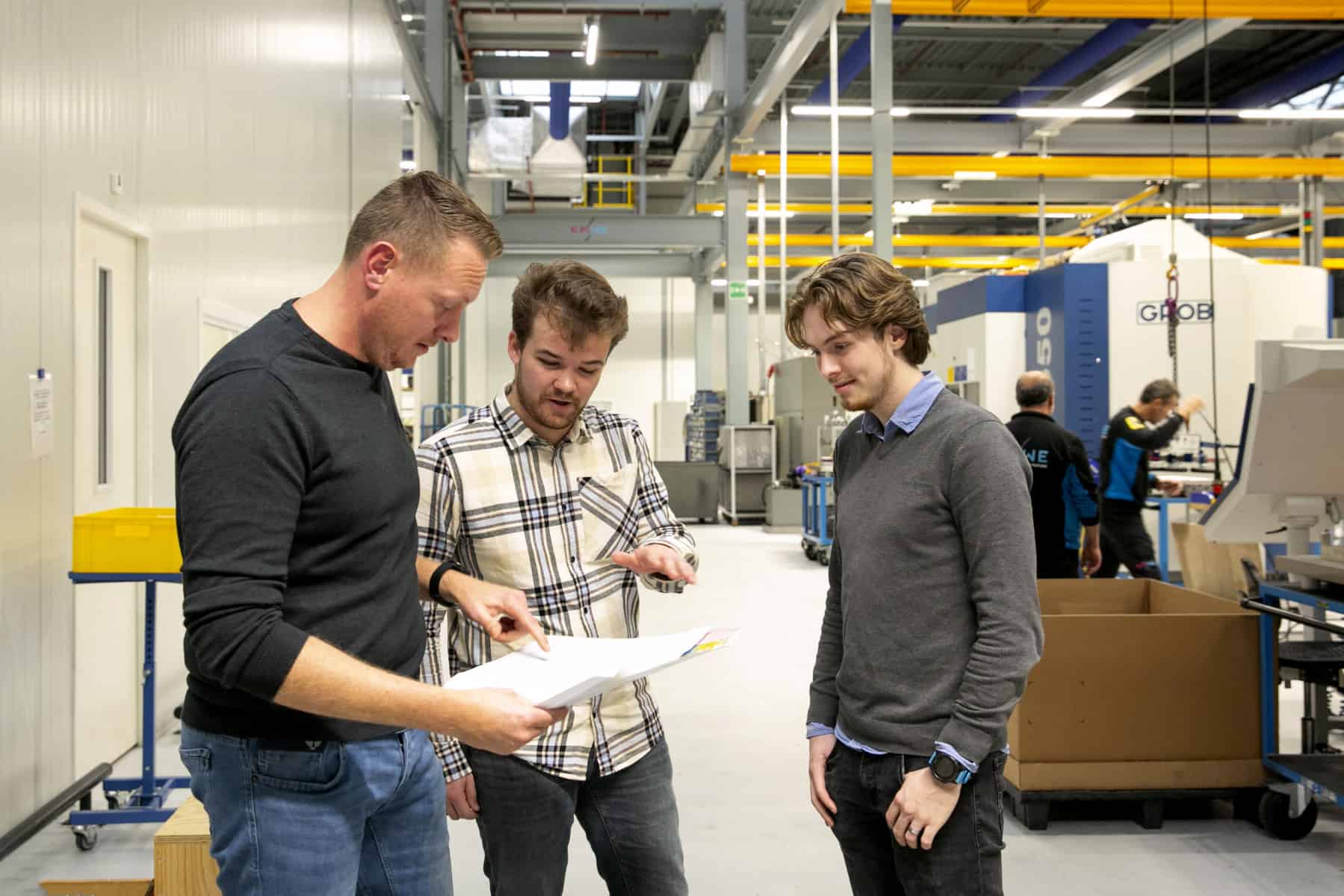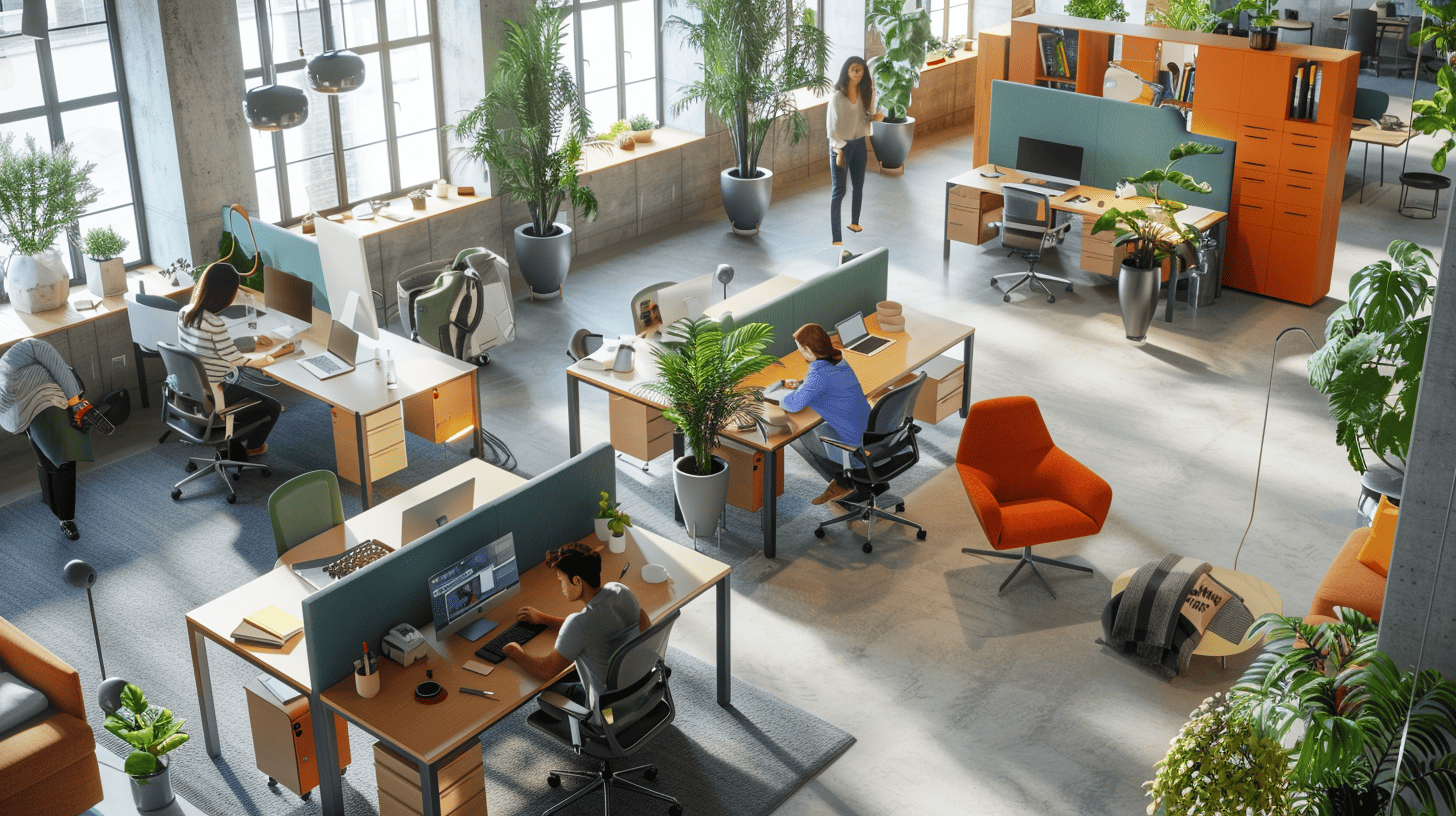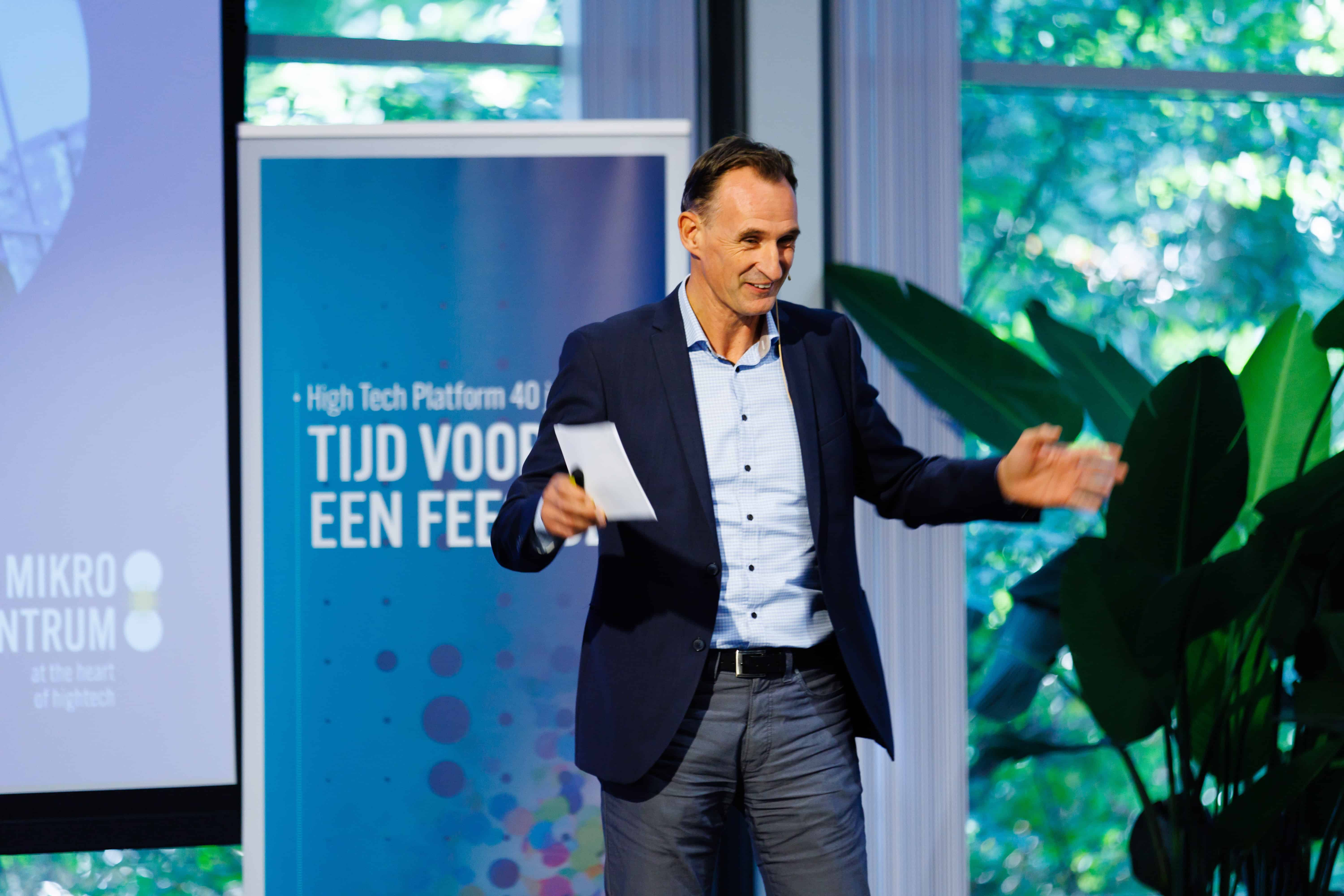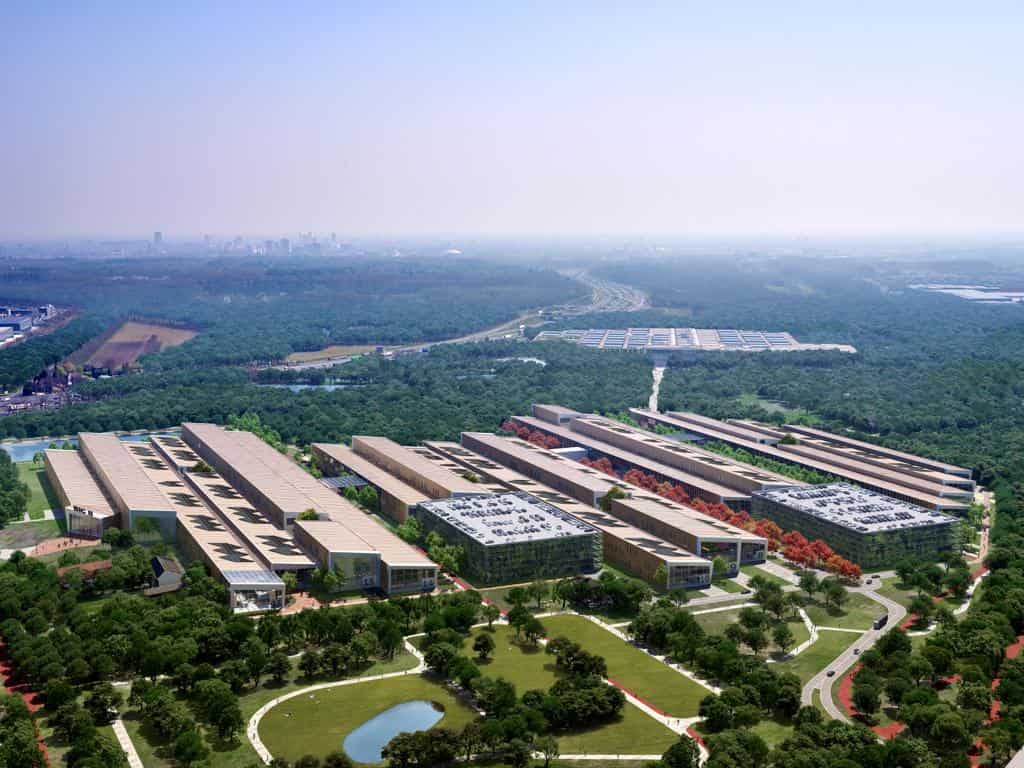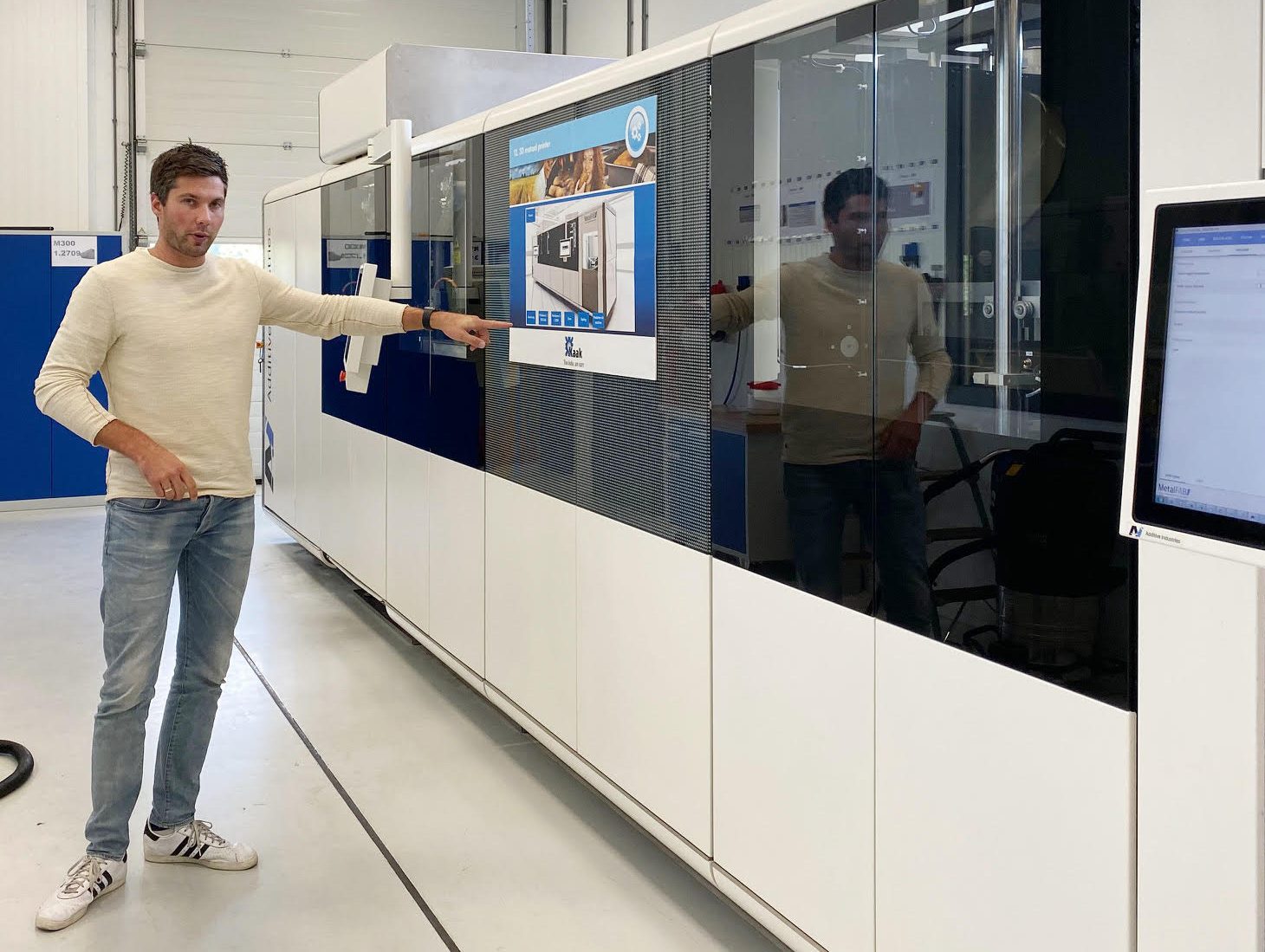
A constant humming can be heard, the room for the most part is filled with a rectangular machine. Through a small window in the same machine you can see sparks flashing. “Luuk Wissink from K3D points to the MetalFab1, a large 3D metal printer from Additive Industries in Eindhoven, The Netherlands. The sparks stop and an automatically-moving arm lays down a new layer of powder. “This recoater places a very thin layer on the powder bed by means of a finely meshed system. Then the construction plate drops and the lasers can do their work again. With the current setting, the printer has to laser up to twenty of those layers in order to reach a height of one millimetre,” he explains.

Wissink holds up a 3D-printed knife from the bakery factory owned by the Kaak Group, the Dutch company that K3D came from. “Because the layers are so thin, we are able to build up the material so that it has a very fine structure. Wissink runs his hand over the blade, which is full of minuscule holes where air can be blown through. “The blade is porous. Air is transported through the handle to the porous openings. Dough doesn’t stick to the knife during cutting thanks to this air flow.” K3D won the 2019 Additive World Design for AM Challenge with its design of the knife.

This is just one example of the benefits of metal-printed products or parts. “You can print all kinds of working components such as threads, or hinges in one go without all kinds of extra steps or post-processing during the manufacturing stage,” Wissink sums up.
Adjusting parameters and determining the requirements for a product
At the Brainport Industries Campus in The Netherlands, K3D is working as part of the K3D-AddFab innovation program with partners from the first hour, such as KMWE, NTS, De Valk, Brainport Industries, Additive Industries and Summa College on finding ways to take 3D metal printing technology further. “You can adjust about a hundred-and-twenty different parameters in the printer. You could compare it to an equalizer when you play music on your laptop. Everyone likes the sound at a different setting. It’s the same for end customers too, except that it’s about the product’s properties. For one application, a smooth finish is very important, while for another customer its durability and light weight are more interesting. In aviation, for example, K3D and K3D-AddFab work closely with the end client. We want to understand their problems. We try to come up with a certain standard per industry and determine which requirements and qualities a component has to meet.”
As smooth as a mirror, or preferably lightweight and strong? Together with the end customer, we try to understand their problems in order to determine the best characteristics for a product.” Luuk Wissink
Not only do these standards and quality certifications provide clarity, Wissink says, but they also instil confidence for parties who are not yet familiar with 3D metal printing. “There are more printers in the Netherlands than there is demand for products; there’s basically an overcapacity. We want to familiarise the market with the technology by sharing our knowledge and experience. This is something we are doing not just in Eindhoven, but also in Terborg. We’re trying to introduce companies to the design, manufacture, and the application of 3D metal printing in an accessible manner through open cooperation.”
Keeping a critical eye on added value
Companies can visit the campus and see the possibilities and advantages of metal parts from a printer. “Of course, we show plenty of examples here to give companies an idea of what is actually feasible. But we don’t want to pretend that 3D printing is a solution for everything. I sometimes see some engineers who have just graduated glorifying this technology. That’s a shame. We still need to look critically at where it can offer added value. How do you bring it to the market? How can you integrate it into existing processes? Will it remain affordable? It is a relatively new technology, and large companies like ASML are curious. But they want certainty; if it turns out to be disappointing in any way, 3D printing will be immediately scrapped.”
3D printing is not a solution for everything. Some engineers glorify the technology. We still need to look critically at where it can offer added value. ” Luuk Wissink
In order to avoid this, Wissink and his team enter into discussions with parties at an early stage. Not just to promote the technology and its possibilities, but also to let engineers actively brainstorm along with them. “We give guest lectures at schools and workshops to companies so as to increase the knowledge about 3D metal printing. It is important that companies embrace the technology where it is most useful. So, if it’s not possible, we say so. The products are often complex, which is why we always involve engineers with knowledge of the final project. They can put their finger on the problem and pass the ball back to us. These discussions are extremely important for achieving a well-printed component or product.”
Being open to ideas from others
Wissink’s door is also always open at K3D to hear from others where things could be improved. Wissink: “We have a young team consisting of six people; the youngest is 26 and has just graduated from mechanical engineering, and the oldest is 35. I think it is important that everyone feels valued, we make a lot of decisions together. It is a new market that we all have to shape.”
Wissink points through the window in the direction of the educational institutions on the campus. “Students can literally look in here and see what we are doing. They can even come here to sit and work and we are happy to help them if they have any questions. We regularly have interns and let them do and learn lots of new things; it’s important that they get the chance to develop further. They will also be creating the market in the near future.”
Currently, students from Fontys and Summa are working on a way to get a printed product off a construction plate faster and easier. “When the products come out of the printer, they go to a band saw machine. This saws off the products from the base plate on which they are printed. This type of plate weighs at least 60 kg and is now loaded onto a trolley. We have commissioned them to come up with an innovative solution to improve this process. There is also quite a bit of metal powder left behind that could perhaps be reused if we were to collect it automatically; we have students looking into this as well.”
Everyone needs to feel valued, from starters to experienced engineers. But also interns who still have to learn the trade. It is a new market that we will all have to shape.” Luuk Wissink




